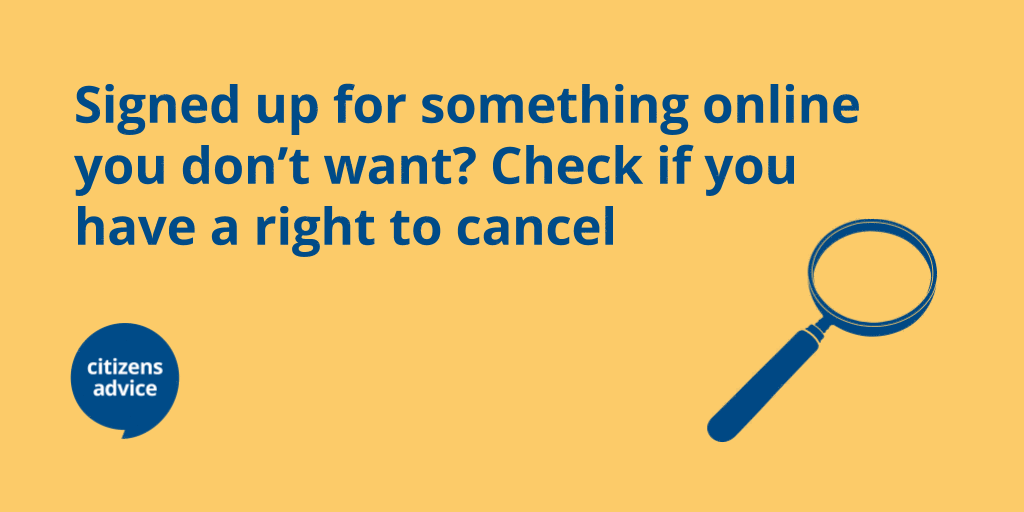Published: Monday 27 November 2017.
Last reviewed and archived: June 2020. This page is now archived and will no longer be updated.
For the latest advice and information about consumer issues please visit the Citizens Advice website.
 Advice about signing up for a subscription
Advice about signing up for a subscription
It’s not always easy to tell when you’re agreeing to a subscription. Sometimes they’re called something else - like a free trial, limited offer or sample.
That’s why it is important before you sign up to know all about what you’re signing up for online, and when you can get your money back if you signed up to something you weren’t expecting.

Before you sign up
- there’s a padlock symbol next to the address bar.
- the web address starts with ‘https’.
- the company’s address has a street name - not a PO box number.
- what you’ll pay - and how long for.
- what you’ll get for your money.
- if they’ll charge you after the offer ends.
- how to cancel the payments.
Check how you’ll be paying
If a company asks for your bank account details they’ll usually set up a direct debit. This is the best way to pay because it means the company have to ask if they want to change the amount of money they take from your account.
If they ask for your credit or debit card details, they’ll be able to change the amount of money they take without asking you. This is called a Continuous Payment Authority (CPA).
If you don’t want the subscription
If you know you don’t want a subscription, the best thing you can do is avoid using it.
If you do this, you’ll be able to get a refund if you’re within the ‘cooling-off period’.
This period lasts for 14 days after you receive the first item or sign up for the service.
Even if it’s been longer, you can try asking for a refund if you didn’t think the company made it clear you’d be paying for a subscription. For example, if they didn’t tell you:
- you’d start paying a regular subscription, after a trial period or offer.
- what you’d be paying for.
- how much it would cost.
- when you can end the subscription - and how to do it.
You might need to cancel the payments as well as telling the company you’ve cancelled the subscription. How to do this depends on how you paid. If you paid with:
- your bank account details - tell your bank to cancel a direct debit.
- an app or online company like PayPal or Google wallet - check the process on their website.
- your credit or debit card details - tell your bank or card issuer to cancel a continuous payment authority (CPA).
If the next payment is due soon, you could also ask your bank or card issuer to block your card.
The Citizens Advice consumer service can help you work out the best way to cancel your subscription.